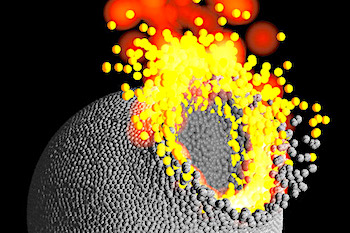 Analysing a mixture of earth samples and meteorites, scientists from the University of Bristol have shed new light on the sequence of events that led to the creation of the planets Earth and Mars.
Analysing a mixture of earth samples and meteorites, scientists from the University of Bristol have shed new light on the sequence of events that led to the creation of the planets Earth and Mars.
Planets grow by a process of accretion – a gradual accumulation of additional material – in which they collisionally combine with their neighbours.
This is often a chaotic process and material gets lost as well as gained.
Massive planetary bodies impacting at several kilometres per second generate substantial heat which, in turn, produces magma oceans and temporary atmospheres of vaporised rock.
Before planets get to approximately the size of Mars, gravitational attraction is too weak to hold onto this inclement silicate atmosphere. Repeated loss of this vapour envelope during continued collisional growth causes the planet’s composition to change substantially.
Dr Remco Hin from the University of Bristol’s School of Earth Sciences, led the research which is published [September 28] in Nature.
He said: “We have provided evidence that such a sequence of events occurred in the formation of the Earth and Mars, using high precision measurements of their magnesium isotope compositions.
“Magnesium isotope ratios change as a result of silicate vapour loss, which preferentially contains the lighter isotopes. In this way, we estimated that more than 40 per cent of the Earth’s mass was lost during its construction.
“This cowboy building job, as one of my co-authors described it, was also responsible for creating the Earth’s unique composition.” [More at links]








